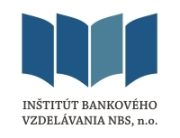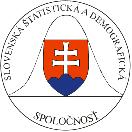The surprisingly high economic growth of 4.4 percent reported in Slovakia for 2002 confirms the continual acceleration of the economy. It significantly exceeded expectations of the market and the National Bank of Slovakia (NBS), which were between 3.5 – 3.8 percent, as well as estimates of international institutions. The OECD predicted Slovakia’s economic growth at 4.3 percent and the UN European Economic Commission put its estimate at 4.0 percent. „Thus Slovakia unambiguously overtook other countries of the Visegrad Group in the economic growth in 2002,“ said Ludova Banka analyst Mario Blascak.
The market was especially surprised by the growth dynamics reported for the final quarter of 2002, which was 5.4 percent and thus hit a four-year high. According to Postova Banka analyst Michal Dzacovsky, the growth of gross domestic product (GDP) was driven by the final consumption when it accounted for 80 percent of the aggregate GDP. „Its influence on GDP was so significant that if other items had remained unchanged, the GDP would still have grown by 3.25 percent in Q4,“ he said. Slovak Rating Agency analyst Katarina Kohutikova was surprised the most by final consumption of households, propelled by real wage growth that measured 5.3 percent. According to Mr. Dzacovsky, the growth of final consumption of households was driven by seasonal factors and development of bank services and consumer loans. Mr. Blascak added that also expected changes in excise taxes in 2003 might have contributed to the higher final consumption of households at the end of 2002.
Analysts perceive the fact that the government’s consumption did not drive the GDP growth in Q4 as a positive feature. But they see such a development as appropriate in the post-election period. The creation of gross capital soared by almost 21 percent y/y. Slovakia last posted such an increase in Q3 2001. „The change in inventories, which did not post highly negative figures below negative SKK 10 billion, which are typical for the final quarter of a year, contribute the most to the high creation of gross capital,“ said Mr. Dzacovsky. Slavia Capital analyst Pavol Ondriska added that while domestic demand rose 8 percent, effective domestic demand which excludes inventories, increased by only 2.3 percent, documents which documents the influence of inventories. Even though export growth exceeded the growth rate of imports, the foreign trade deficit reduced the country’s GDP since Slovakia consumed more than it produced. Export of products and services grew 12.37 and import increase by 11.87 percent.
Over 2002, consumption, supported by fast growth of real wages, was the driving force of economic growth. Households as well as public administration reported higher expenditures. But the growth dynamics of the government’s consumption slowed down as the end of the year approached. Creation of gross capital and narrowing trade deficit contributed to economic growth to a significant extent. By its economic growth, Slovakia has overtaken other countries in the region and in the European Union. „We are again a bit closer to the standard of living in the European Union; but this journey will be long and difficult,“ said CSOB analyst Marek Gabris. He sees the strong growth of consumption as unfavorable from the viewpoint of the economic growth’s structure. „But we expect that governmental measures in public finances and price deregulation would slow it down already this year,“ he said. He added that again foreign demand and investments should take over reins in 2003. „Especially the growth rate of foreign demand, which should secure higher growth of GDP, will play a key role,“ concluded Ms. Kohutikova.






